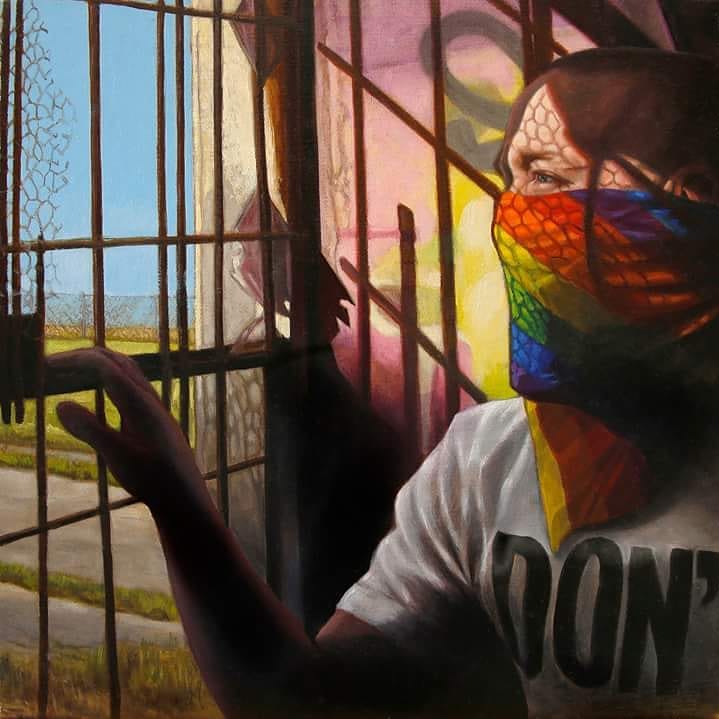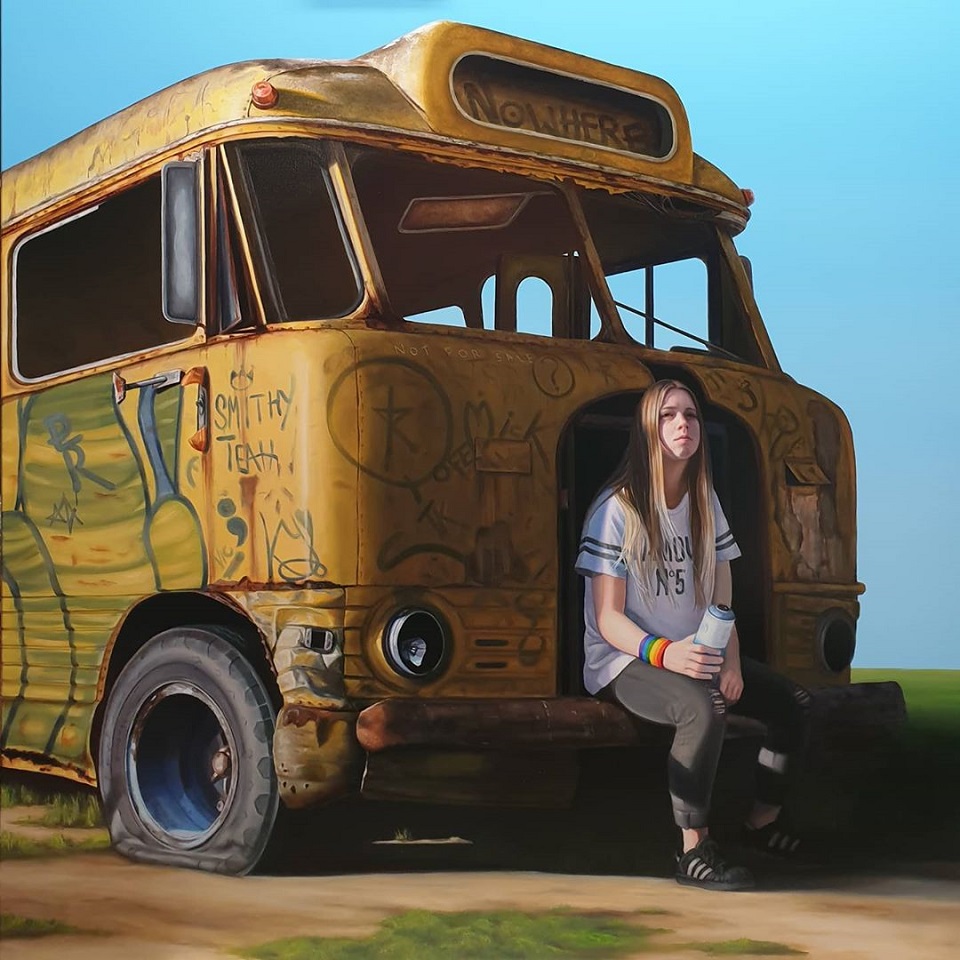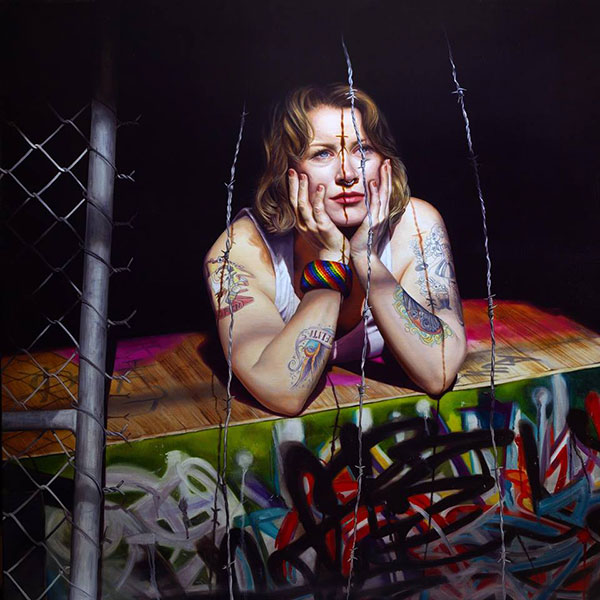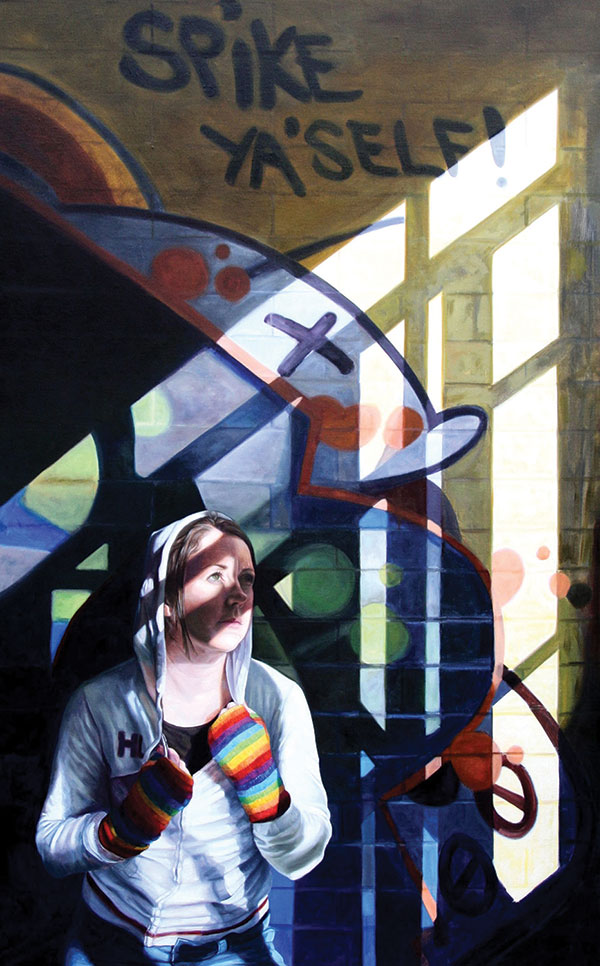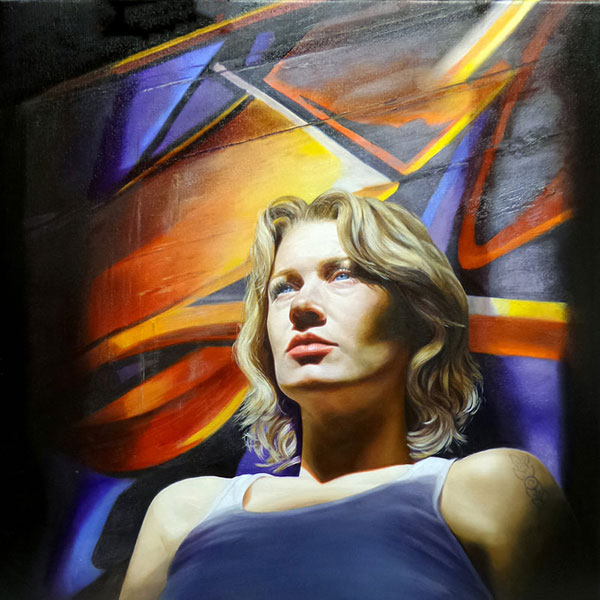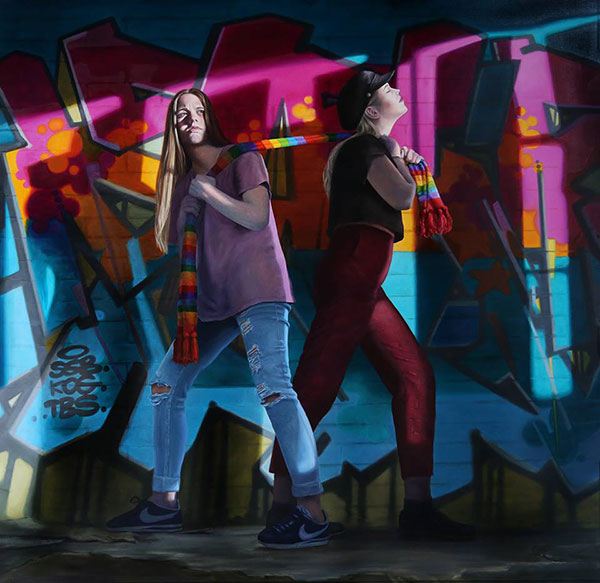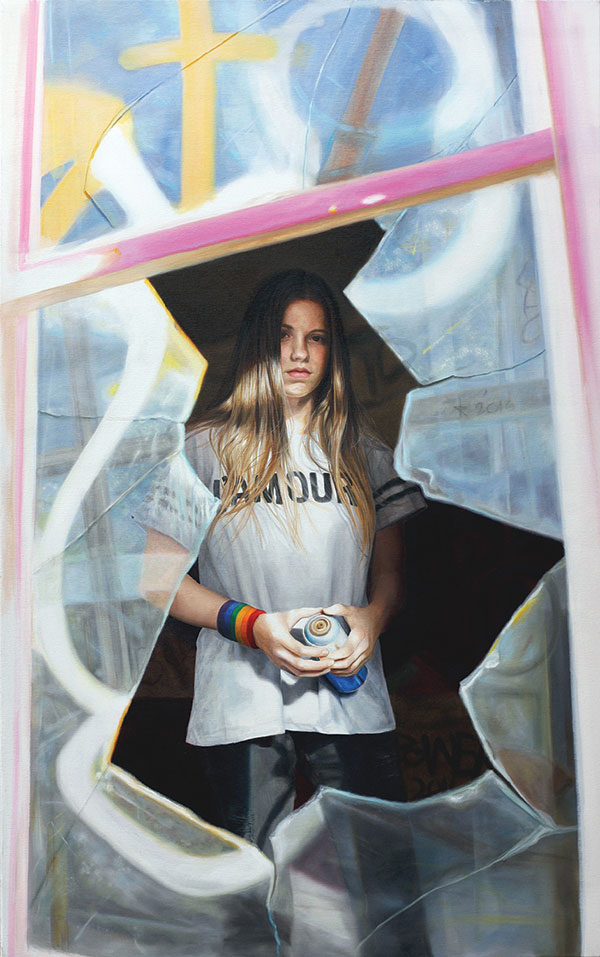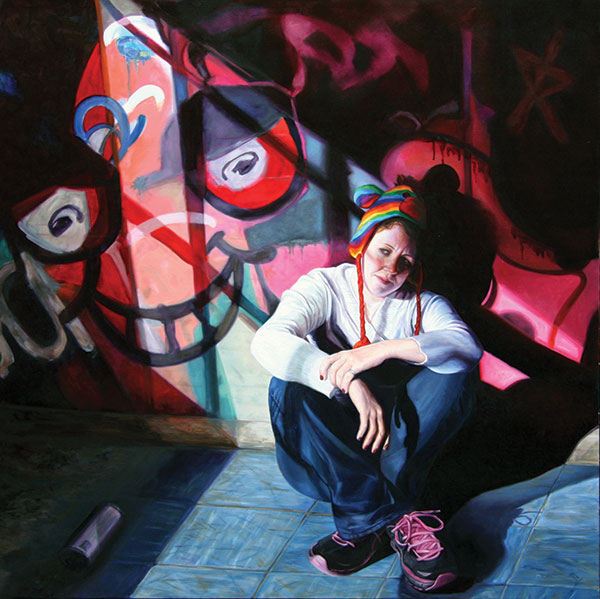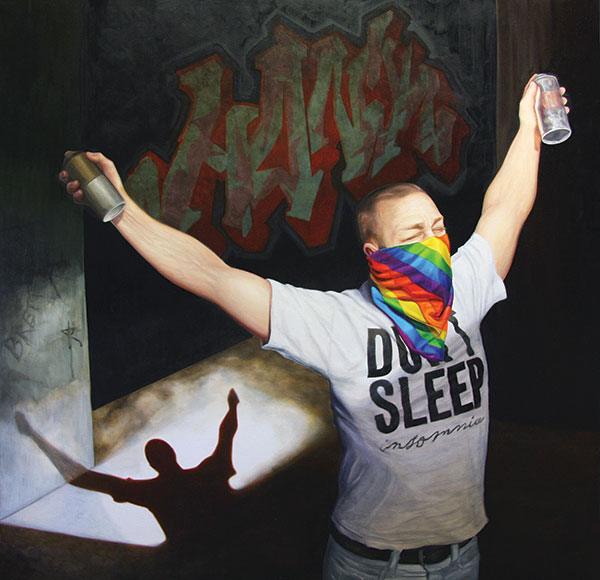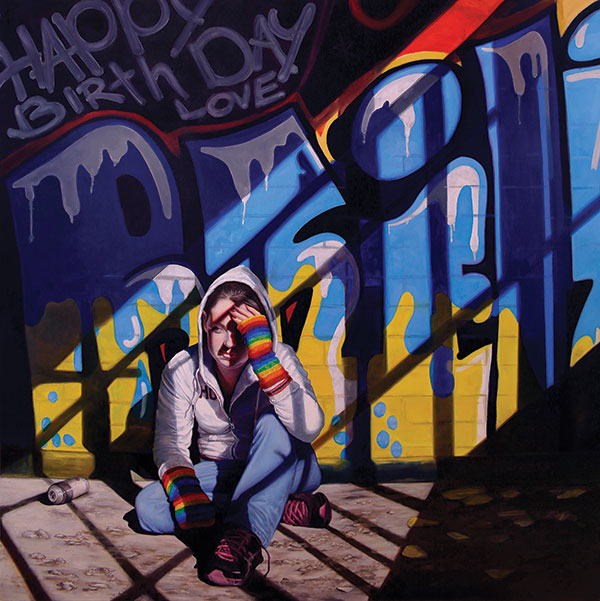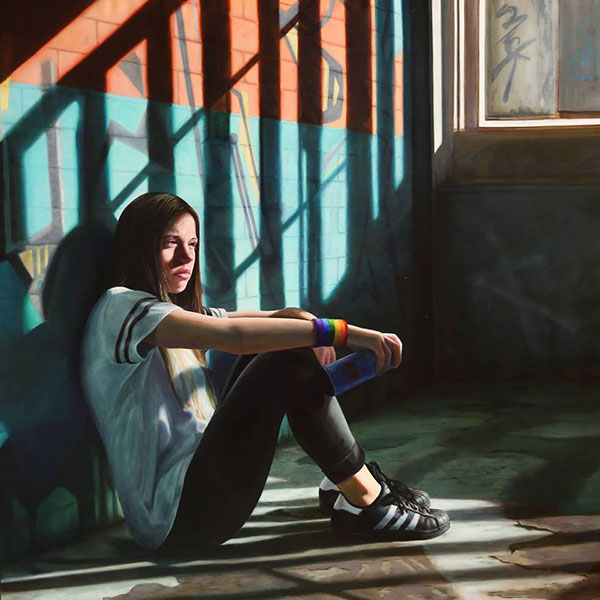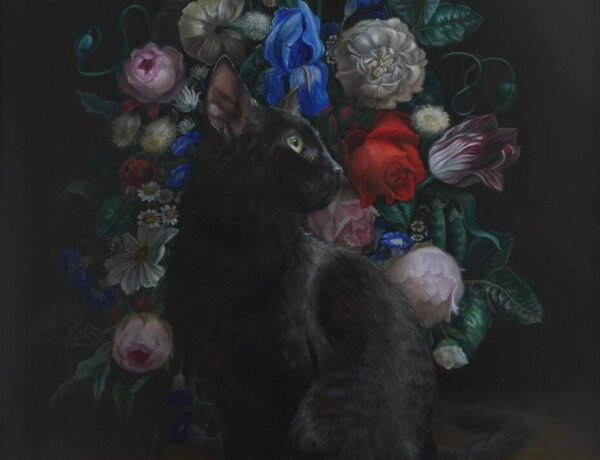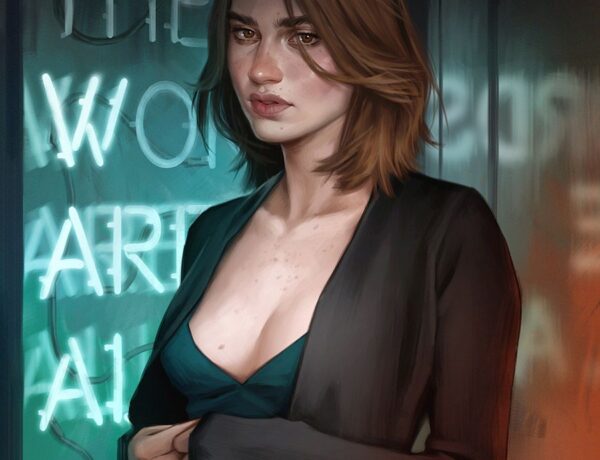It would be easy to say that Australian painter Janne Kearney is living proof that you can begin a career as an artist at any point in your life, but to define her inspiration to us that way would be selling her achievements short. Janne has shown how a lifetime of thinking as an artist, through many trials and tribulations, and whether actually creating art or not during those times, allows your artistic vision to develop and mature.
By the time that she actually began to paint works for exhibition and sale Janne Kearney already had the eye and mindset of an artist with many years of experience, and now shows she is unafraid to make radical new steps in her artwork and push the boundaries of artistic expression.
For too long I tried to paint in a loose manner, seeing it as a weakness I needed to strengthen, finally I realised this plan was flawed and knowing my strength was in realism I let my weaknesses go and decided to super power up my strengths, I never looked back after that.
You didn’t start your career as an artist until your 40’s, what prompted this decision – was it a gradual process, or was there a particular moment in time or incident that spurred your calling as a creative? Is it something you wanted to do in your earlier years, but for one reason or another you never took that leap?
For as long as I can remember, I have wanted to be an artist. I came from a very underprivileged background; when I was a child my mother would save the butchers paper for me to draw on. When I was 10 years old my life was interrupted with the death of my mother on Christmas Eve, my father was not an abusive but was a very emotionally remote man, a product of his era. In an act of love and misguided protection I was not permitted to go to her funeral, my father was a very quiet man who rarely spoke and never about my mother, sparing us the pain of her memory.
I was always told it would be impossible for me to go to university, it was so indoctrinated into me that I never even considered it. As for art school, I didn’t even know there was such a thing, and by the time I found out it was unattainable. My father had remarried within a year of my mother’s death, my home life became difficult and at the age of 16 and in year 11, I left home to live with my boyfriend (later to become my husband) on his very meager 1st year apprentice wages. Life was pretty tough in those years with barely enough to eat and not enough money for bus fare to school, I would cycle a 20km round trip to school and take cookery classes for the food.
In order to survive I dropped out of school and began working as a labourer in factories, before becoming Australia’s first female apprentice painter and decorator with the Ford Motor Company. This was a brutal, totally male dominated and misogynistic place for a teenage girl to work. I endured daily bullying and rampant abuse, in my 2nd year of this relentless harassment and after receiving death threats and being told by the independent industrial training commissioner that if I didn’t like it to “fuck off”, I decided it was just too dangerous to continue.
So, for many years I worked in paint shops selling and mixing paint, renovating houses, and raising a family. Fortunately, during my schooling as an apprentice my trade school teacher took me under his wing and taught me how to be an expert in color mixing and decorative paint finishes, this has been an invaluable skill in my fine art career.
What were you doing before you decided this was what you wanted to do, did you have any involvement in the arts in some other capacity? Did you have any formal training in the arts or any mentors during your earlier years?
When I was in my late teens I started life drawing, that was the only more or less constant creative outlet I had. During this time, I met a wonderful artist who was somewhat like a mother figure to me, she badgered me to come portrait painting with her on Mondays, and as much as I would have liked to, I was unable to because I had bills to pay and was busy working and raising a family. Then the unthinkable happened she was diagnosed with terminal cancer, I managed to rearrange my work and family schedule and ‘made’ time to spend the last few months of her life taking her to community portrait painting classes.
I cherished those last few Mondays with her and had mixed feeling about painting after that, it was too painful to continue on without her, so I put painting behind me as a lost dream. One night some years later I had a dream of her so vivid it felt more like a visitation, this dream stuck with me and as if an epiphany I made the decision to leave work and start a career as a portrait artist. I figured it would take me 10 years to learn the craft and in my forties, I had no time to waste.
I have no formal art training and have just done the odd workshop here and there, it’s really been a matter of figuring things out as I went. For too long I tried to paint in a loose manner, seeing it as a weakness I needed to strengthen, finally I realised this plan was flawed and knowing my strength was in realism I let my weaknesses go and decided to super power up my strengths, I never looked back after that.
I have always felt that it takes a particular type of bravery to show your work for the public to judge, every artist always puts something of themselves into every piece they create. How did you feel before the first public showing of your work – and after? How has this changed now that your public recognition has grown?
The first time I ever showed my work publicly, it felt extremely uncomfortable, it was as if I was hanging my underwear on the wall. It took me many years before I felt comfortable even calling myself an artist, I didn’t feel worthy enough and felt quite uncomfortable with the title. It wasn’t until I started being juried into some major national and international competitions that I felt validated as an artist. What a silly thing to do wait for validation from some higher being, such a waste emotion and energy.
Talking of public recognition, how do you feel that the awards that you have won or been finalist in (two times finalist of the BP Portraiture Prize at The National Portrait Gallery, London, and winner of the 2017 Corangamarah Award, Small Works Section have affected that recognition and your own confidence in public reception of your work?
I have taken part in over 25 exhibitions across Australia, Italy and the UK, and have been a finalist in over 70 prestigious national and international Art Prizes. Won several smaller art awards, and in 2015 I was a semi-finalist in the BP and in 2017 was a finalist in the National Portrait Gallery, London, BP Portrait Prize, (considered the worlds most revered portrait prize), being hung in the top 50, after receiving over 2,700 entries from 93 countries, the award is regarded as the ‘Portraiture Oscars’.
Most recently I was awarded the prestigious Fashion Week San Diego Award (FWSD), Chosen from 3750 entries from 69 countries, the ARC is the most important realist painting prize in the US and the Americas. FWSD is an award where fashion designers will be matched with 7 winning artists’ work, the designers will create an original couture outfit and look inspired by the work of art. My winning work along with the specially designed garments will be on display with live models at the October 12th FWSD18 opening night and remain on exhibition paired with the couture creations. FWSA ARC Award, is also a traveling award, visiting prestigious galleries in LA, New York, San Diego, MEAM, (European Museum of Modern Art), Barcelona.
For the opening night event, FWSD and ARC will hold a panel discussion to with the artists and designers to discuss the works with the artists and their partnership. In addition, that evening guests/attendees will be able to “vote” for their favourite piece and pairing. Winners will be announced the following day and additional awards will be given to the “team”/”individual” at that time.
I am also represented by Flinders Lane Gallery Melbourne. 37 Flinders Ln, Melbourne VIC 3000. Ph (03) 9654 3332.
I am in overjoyed that my work has been recognised on such prestigious and important platforms, the odds in beating so many other incredibly talents artists from all over the world is staggering. It is quite a surreal feeling, now at the age of 55 I believe I am flying the flag for the self-taught, older artists (especially women) who never thought it possible to follow your creative dream, if you work hard enough and long enough you can do it! I am looking forward to taking part in the discussion panel at FWSA, my art has taken me places I only thought possible in my dreams.
There’s another type of recognition that figurative artists in Australia have particularly struggled to achieve, that of the ‘fine art’ community. Is this something you have encountered, and how have you dealt with the apparent favouring of the conceptual over technique-driven figurative and realist artworks?
This is a very real situation, getting recognition in this country and my own regional gallery is seemly greater odds than getting in the BP or winning a major American award! I do believe the tide is slowly turning as far as appreciation of the skill required to paint figurative realism, largely thanks to organizations such as ARC, I’m just not sure we have the skill base in Australia required at the tertiary level to teach it, or that our public galleries are committed to embracing it in greater capacity.
To your work itself, you often feature themes with run-down surroundings, daubed with street art, and the subject appearing to be isolated within that environment, perhaps homeless. Is this a social and moral commentary on the plight an often forgotten part of society that you feel strongly about? Have you worked with the homeless in any capacity?
I guess in some ways the lost teens in my work reflect the struggles of my early years. My paintings ask the viewer to disregard preconceived judgements of people, society and, at times, reality, each painting invites us to contemplate life within the margins. My work often examines social issues, addressing unjust discriminatory practises, seeking to give a voice to the meek and draw an awareness and cultural change to the powerless.
Many of my paintings include a subtle rainbow motif, incorporating this symbol is in recognition of every human’s equal worth, promoting tolerance and inclusiveness for all. I started painting rainbow colors as a protest to our government’s stance on same sex marriage, an issue close to my heart.
For your references do you use people you meet in these surroundings, or do you use other references superimposed into the settings?
I mainly shoot in my studio, but I was given permission to shoot at a reinvented abandoned power station that was turn into a public art hub. It was the lighting in the space that I found most interesting, for me capturing light is the most stimulating part of the process. I always take my own photos for my reference, this has been another steep learning curve for me. My models are of family, friends and sometimes randoms I meet at various places and think they have what I am looking for, for a certain concept I have in mind.
Your use of light is particularly striking, are there other artists whose use of light in portraiture you find compelling?
Well of course the masters of light Caravaggio and Rembrandt, I had the privilege of seeing many of their works on a trip to Europe last year. Painting with such high contrasting light is challenging and is something I have been concentrating for a few years now and I love it and will continue to pursue it. I love the symbolism of light and shade as much as I do the effect resulting from the use of it, it sends a powerful message that even in our darkest of moments if we search for it we can find the light.
Who were your earliest influences and how have they changed from those you have now – these can be people, film, literature, or music as well as visual art, anything that inspires your own creativity?
I have always loved the art of Norman Rockwell, Frans Hals and Judith Leyster. It was their animated and narrative aspects of their work that inspired me the most. There are so many modern artists I love so it wouldn’t be fair of me to single any out.
Could you take us through your process from the initial concept to the completed work … and how long does that process take? Are there any particular techniques of your own that you have developed to make the process smoother, to get – and stay – in the right mindset?
I have learnt not to set any concept in stone, my creative process has become quite fluid. I will start out with one idea and grab a model head off for a shoot and then quickly see something else that grabs my attention and run with a whole new concept. I often take hundreds of photos and spend days even weeks looking over them adjusting the color and light etc in Photoshop, I do this instead of painted studies. Another thing I like to do once I have the reference ready is to get it printed off in a few different sizes, sometimes work I thought would make a great large painting actually looked better in a smaller format or vice versa.
Once my work is transferred to my canvas I always work the face up first, I guess this is a residual from the days when if I couldn’t get the head right I wouldn’t waste my time on the background. I go straight in with color no or very little underpainting so to speak, but I do layer up my work to build up a nice variation of color in the skin tones. Some of my larger more complicated paintings I will block in very loosely with pastel, giving me more of a color guide than anything. I use a range of techniques in the one painting, from direct painting to glazing and scumbling depending on what the work requires, the whole process can take from 2 to 4 weeks painting full-time.


